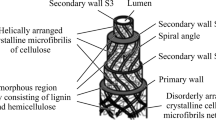The addition of fibers helps to increase the performance of concrete in terms of resistance and flexibility. Different types of fibers that have different mechanical properties may change the behavior of concrete. Fiber-reinforced concrete with varied combinations of fibers (steel, macro synthetic, and polypropylene fibers) in 1% volume is investigated in this research. Concrete samples were fabricated from a combination of two types of fibers with different percentages to measure the compressive strength with the approach of determining the optimal ratio of fibers. The results showed that the hybrid samples containing steel fibers provide higher compressive strength compared to the samples containing macro synthetic and polypropylene fibers. Macro synthetic and polypropylene fibers in concrete samples have played a significant role in increasing the flexibility and efficiency of concrete, as well as significantly reducing cracking and increasing durability and toughness. In these hybrid models, coherence is preserved in the event of failure. The combination of polypropylene fibers with both steel and macro synthetic fibers significantly reduces the compressive strength of concrete samples. In concrete samples with hybrid fibers, samples with a combination of macro synthetic and steel fibers had higher compressive strength than samples with a combination of steel and polypropylene fibers.








Similar content being viewed by others
References
F. Shi, T. M. Pham, H. Hao, and Y. Hao, “Post-cracking behavior of basalt and macro polypropylene hybrid fiber reinforced concrete with different compressive strengths,” Constr Build Mater, 262, 120108 (2020). https://doi.org/10.1016/j.conbuildmat.2020.120108
N. Banthia, F. Majdzadeh, J. Wu, and V. Bindiganavile, “Fiber synergy in hybrid fiber reinforced concrete (HYFRC) in flexure and direct shear,” Cem Concr Compos, 48, 91–97 (2014).
M., Hsie, C. Tu, and P. Song, “Mechanical properties of polypropylene hybrid fiber-reinforced concrete,” Mater Sci Eng, 494, 153–157 (2008).
E. Dawood and M. Ramli, “Mechanical properties of high strength flowing concrete with hybrid fibers,” Constr Build Mater, 28, 193–200 (2012).
Z. Li, C. Li, Y. Shi, and X. Zhou, “Experimental investigation on mechanical properties of hybrid fiber reinforced concrete,” Constr Build Mater, 157, 930–942 (2017).
B. Pan, Y. Gao, and Y. Zhong, “Theoretical analysis of overlay resisting crack propagation in old cement mortar pavement,” Struct Eng Mech, 52, No. 4, 167–181 (2014).
S. Lee and Y. Chang, “Evaluation of RPV according to alternative fracture toughness requirements,” Struct Eng Mech, 53, No. 6, 1271–1286 (2015).
Z. Wu, C. Shi, W. He, and D. Wang, “Static and dynamic compressive properties of ultra-high-performance concrete (UHPC) with hybrid steel fiber reinforcements,” Cem Concr Compos, 79, 148–157 (2017).
M. Chen, H. Si, X. Fan, et al., “Dynamic compressive behaviour of recycled tyre steel fibre reinforced concrete,” Constr Build Mater, 316, 125896 (2022). https://doi.org/10.1016/j.conbuildmat.2021.125896
M. Chen, G. Wang, T. Zhang, et al., “Improving the dynamic splitting properties of engineered cementitious composites using hybrid synthetic polymer and recycled steel fibres,” Constr Build Mater, 400, 132567 (2023). https://doi.org/10.1016/j.conbuildmat.2023.132567
R. Sridhar, “Durability study on engineered cementitious composites with hybrid fibers under sulfate and chloride environments,” Cleaner Materials, 5, 100121 (2022). https://doi.org/10.1016/j.clema.2022.100121
Y. Chen, Q. He, X. Liang, et al., “Experimental investigation on mechanical properties of glass fiber reinforced recycled aggregate concrete under uniaxial cyclic compression,” Cleaner Materials, 6, 100164 (2022). https://doi.org/10.1016/j.clema.2022.100164
H. Hosseinzadeh, A. M. Salehi, M. Mehraein, and G. Asadollahfardi, “The effects of steel, polypropylene, and high-performance macro polypropylene fibers on mechanical properties and durability of high-strength concrete,” Constr Build Mater, 386, 131589 (2023). https://doi.org/10.1016/j.conbuildmat.2023.131589
N. Ganesan and K.P. Shivananda, “Strength, and ductility of latex modified steel fiber reinforced concrete flexural members,” J Struct Eng, 27, No. 2, 111–116 (2000).
S. Fallah and M. Nematzadeh, “Mechanical properties and durability of high-strength concrete containing macro-polymeric and polypropylene fibers with nano-silica and silica fume,” Constr Build Mater, 132, 170–187 (2017).
D. Patel, C. Pleesudjai, V. Bui, et al., “Mechanical response of precast tunnel segments with steel and synthetic macro-fibers,” Cem Concr Compos, 144, 105303 (2023). https://doi.org/10.1016/j.cemconcomp.2023.105303
M. Caballero-Jorna, M. Roig-Flores, and P. Serna, “Influence of short-term operating temperatures on compression and flexural behaviour of Macro Synthetic and Steel Fibre Reinforced Concretes,” J Build Eng, 67, 105919 (2023). https://doi.org/10.1016/j.jobe.2023.105919
S. Zhao, R. Liu, J. Liu, and L. Yang, “Comparative study on the effect of steel and plastic synthetic fibers on the dynamic compression properties and microstructure of ultra-high-performance concrete (UHPC),” Compos Struct, 324, 117570 (2023). https://doi.org/10.1016/j.compstruct.2023.117570
H. J. Lee and K.-H. Yang, “Compressive and flexural toughness indices of lightweight aggregate concrete reinforced with micro-steel fibers,” Constr Build Mater, 401, 132965 (2023). https://doi.org/10.1016/j.conbuildmat.2023.132965
A.K. Devi Keerthika Esakki, S. Karan Aakash Dev, T. Gomathy, and C. Chella Gifta, “Influence of adding steel – glass – polypropylene fibers on the strength and flexural behaviour of hybrid fiber reinforced concrete,” Mater Today-Proc (2023). https://doi.org/10.1016/j.matpr.2023.05.055
ASTM C496, Standard Test Method for Splitting Tensile Strength of Cylindrical Concrete Specimens, American Standards for Testing and Materials (2011). https://doi.org/10.1520/C0496-96
Author information
Authors and Affiliations
Corresponding author
Additional information
Translated from Problemy Mitsnosti, No. 1, p. 134, January – February, 2024.
Rights and permissions
Springer Nature or its licensor (e.g. a society or other partner) holds exclusive rights to this article under a publishing agreement with the author(s) or other rightsholder(s); author self-archiving of the accepted manuscript version of this article is solely governed by the terms of such publishing agreement and applicable law.
About this article
Cite this article
Sun, L., Fu, J., Wang, D. et al. Investigating the Effect of Various Fibers on Plasticity and Compressive Strength of Concrete Samples. Strength Mater 56, 200–208 (2024). https://doi.org/10.1007/s11223-024-00639-3
Received:
Published:
Issue Date:
DOI: https://doi.org/10.1007/s11223-024-00639-3




